Revising and editing is a major part of grant writing and cannot be rushed or minimized.
Anything from missing the smallest detail to a glaring omission can invalidate a grant proposal.
Consequently, grant revisions are far from a one-and-done process. Depending on the complexity of the proposal, you may have to go through the revision process three, four, or five times before your work is ready to submit.
Therefore, give yourself plenty of time for the review process by starting early.
Reviewing Grants for Content
A well-written grant proposal combines elements from several writing styles, including technical writing, storytelling, persuasive writing, and research writing. When you are reviewing your grant draft, it is helpful to revise from multiple perspectives.
The following questions can guide you as you’re performing a big-picture review of your work:
Technical
Are your programs, goals, and objectives explained clearly?
Since grant reviewers can come from all different types of backgrounds, you cannot assume they are familiar with the jargon in your industry. Your writing should be engaging, but plain and accessible to a wide audience.
Academic
As with academic writing, grant proposals are heavily evaluated on their use of statistics and data.
Are your sources credible and relevant?
Also, read through any claims you make in the proposal and make sure they are evidence-based. For example, if you state a program is needed in your community, corroborating that claim with survey results or research demonstrating that need can significantly improve your argument.
Persuasive
Your grant may be one out of dozens or even hundreds placed before the grantmaker, and your words are the only way to convince the reviewer that your project is worth funding.
Are you making compelling arguments?
The most-effective arguments are logical, but also appeal to your reader’s emotions.
Leaning too far in either direction can leave reviewers underwhelmed or undermine your credibility. Read through your work and make sure your approach is balanced.
Storytelling
Proposals should include all of the elements of your “story’s” plot.
After reading your proposal, a reviewer should understand:
- The setting where your project will take place
- The conflict or issues that are caused by the issue you are trying to address
- The solution you are providing to address the issue
- The outcome should your project be implemented.
Missing any of these plot points can make even a well-written proposal fall flat.

Proofreading and Editing Grants
Editing and writing are best performed as two separate processes. If you start your editing directly after you’ve written your draft, you will miss errors, as our brains are very good at filtering out our writing mistakes.
If you’re short on time, try using a text-to-speech software that will read your words aloud. (There are many free websites or browser extensions you can use.)
Another useful self-proofreading strategy is printing out your work and using a pencil or ruler to trace the text and go through it line-by-line.
Self-editing is important, but it isn’t enough on its own.
Ideally, you should have different sets of eyes on your work. One of the best ways to get constructive feedback for a grant proposal is to give it to someone who is not involved with the project or the nonprofit you are writing for.
That way, you will be able to gauge if your writing is suitable for lay audiences.
Reviewing Grant Guidelines
Finally, you should also review your work to ensure it meets all of the requirements outlined in the call for proposals. Make sure all questions are answered and that you have collected all necessary attachments.
To make things easier on myself, I often set up a separate folder labeled “For Submission” to hold all of the documents I need to include with the application.
The final draft of my proposal will go in there as well, so when I am sending out the email or filling out the application portal, I only need to access one folder.
Also look closely at the call for proposals and check for any page, word, or character-count limitations. Other guidelines such as font type and size or page margins can be easily missed, so always double check this before submitting.
Final Thoughts
When it comes to crafting compelling, award-winning proposals, the review process is just as crucial as the writing, maybe even more so!
Networking with other grant writers and nonprofit professionals is a great way to find peer-reviewers who can give you insightful feedback on your work.
Members of our Grant Writing Made Easy community have the opportunity to share and do guided peer reviews of each other’s writing during our online monthly writing workshops. If you would like to join in, check out more about the Grant Writing Made Easy course by clicking here

If you’re still trying to get started with grants, grab the The Ultimate Guide to Grant Writing for just $47.
Inside, I’m going to teach you how to get your organization grant ready, find the grants you have the highest chance of being awarded, write compelling grant applications, and create a strategic plan that will put your nonprofit on the path to success.






